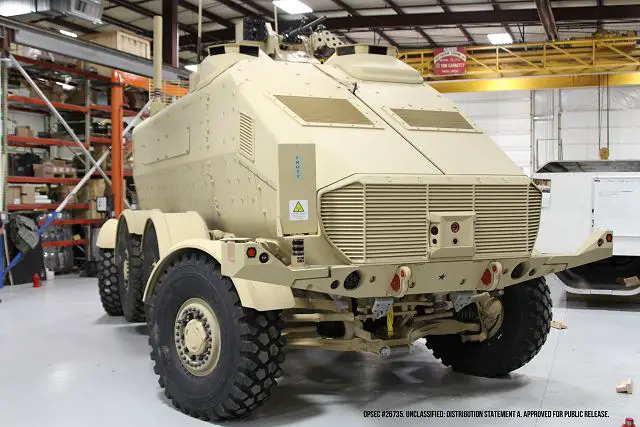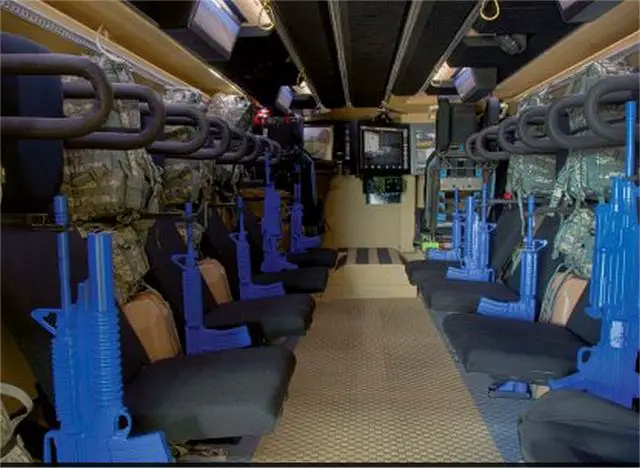|
|
|||
|
Military Defense Industry Technology - CAMEL Vehicle
|
|||
|
|
|||
| U.S. Army CAMEL new Concept for Advanced Military Explosion-mitigating Land Demonstrator | |||
|
During the Lab Day of the U.S. army, the Concept for Advanced Military Explosion-mitigating Land Demonstrator, or CAMEL was showed, a nontraditional Army Ground Vehicle Survivability Demonstrator, designed and optimized with the latest advancement in armor and protection for the safety and survivability of the occupants.
|
|||
|
|
|||
 "The Concept for Advanced Military Explosion-mitigating Land Demonstrator (CAMEL) is one of many displays which will be shown by the Army at the 2015 DoD Labs Day." (Credit photo U.S. Army) "The Concept for Advanced Military Explosion-mitigating Land Demonstrator (CAMEL) is one of many displays which will be shown by the Army at the 2015 DoD Labs Day." (Credit photo U.S. Army) |
|||
|
|
|||
|
TARDEC and its industry partners recently displayed the CAMEL at the Detroit Arsenal to gather feedback from active-duty Soldiers who evaluated the vehicle wearing individual Soldier equipment for an imaginary operational mission. Some of the attributes featured in the CAMEL are: • Interior sized for the central 90 percent of the 2015 Soldier population, as defined by the U.S. Army's Natick Soldier Research, Development and Engineering Center (NSRDEC). • Retention and stowage spaces for Soldiers' weapons and equipment. • Increased engine and electrical system power and efficiency. • Improved maneuverability with high stability factor. • Seats inclined to reduce spinal injuries in a blast. • Protective trim on the top and sides of the crew compartment. • Floors decoupled from the hull. • Fully independent suspension with 14 inches of total travel. • Suspension with minimal exposed components to ensure a clean underbelly capable of deflecting an explosion. • Next-generation driving systems. • 360-degree views with cameras capturing the view outside the vehicle and beaming the video onto screens inside. "This is a new concept in that we are designing the vehicle around the Soldier," explained Steve Knott, the Associate Director of Ground Systems Survivability at TARDEC. "There are a lot of vehicles that, when you get in the back, it is tight. There are protrusions that could cause injury and loose gear that can be harmful in certain situations. These OCP demonstrators are designed around the occupant and offer a new level of survivability for our warfighters. The long-term goal is, of course, to find ways to transfer this technology to our current and future fleets." The retention shelves and bins play a role in operational safety. In most vehicles, Soldiers drop their rucksacks, weapons and other gear wherever they can find space on the floor. Soldiers may be injured by loose objects catapulted inside the vehicle in an explosion. In the CAMEL, those objects all have a designated storage space with straps or belts to hold them and keep them from dislodging during a blast event. CAMEL also provides an ammunition can storage unit called the Modular Ammunition Restraint System (MARS), which was initially developed by U.S. Army Armaments Research, Development and Engineering Center (ARDEC) engineers in Picatinny, NJ, to keep ammo secure in a blast, crash or rollover. The outer structure undergoes significant shape and construction engineering during the manufacturing process to limit the vulnerabilities of the seams during a blast event. The clean, U-shaped underbody with deflector shield channels shock waves away from the vehicles' hull and interior. Combined with its low center of gravity and wide track, the CAMEL provides improved stability with reduced rollover risk. |
|||
|
|
|||
 Inside view of CAMEL, Concept for Advanced Military Explosion-mitigating Land Demonstrator Inside view of CAMEL, Concept for Advanced Military Explosion-mitigating Land Demonstrator |
|||
|
|
|||
|
The CAMEL also has a turret equipped with a 50-caliber weapon system, with space to carry 800 rounds of ammunition. The advanced powertrain features a 100 kW Integrated Starter Generator, which automatically shuts off the engine when the vehicle stops (to save fuel) and restarts instantly when the driver engages the accelerator. Its lithium-ion 6T batteries provide double the power density of a conventional lead-acid battery, enhanced energy storage and silent watch advantages. The SAPA 24-speed automatic transmission requires no torque converter, which improves efficiency. Stainless steel tension rods supporting the flooring in the vehicle enable a damping effect in a blast. Because the floor can absorb energy from a blast, a Soldier's feet and ankles don't have to withstand the full impact. In addition, the pedals are removed from the driver's area and replaced with hand controls. Without having to install pedals in the floor, engineers eliminate entry points for blast pressure and maintain the clean underbelly, keeping the driver's feet and legs better protected. The demonstrator will feature more readily available multi-point restraints with head bolsters in an effort to promote regular use by the squad. The CAMEL also includes specially angled, multi-stage energy absorbing seating to improve comfort and survivability. |
|||
US Army CAMEL new Concept for Advanced Military Explosion-mitigating Land Demonstrator 11006153
- Posted On














